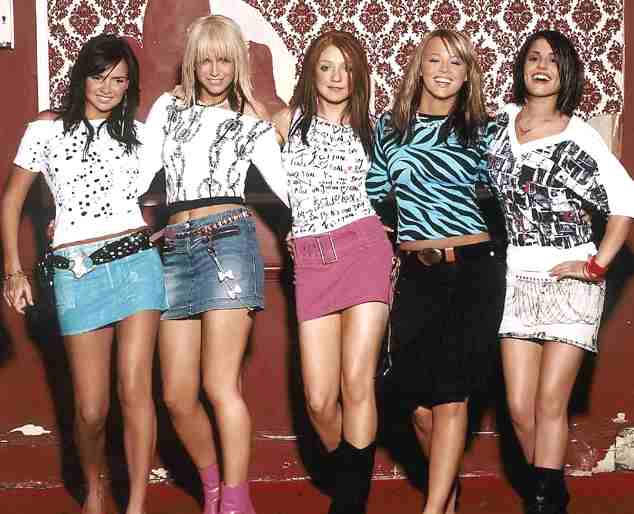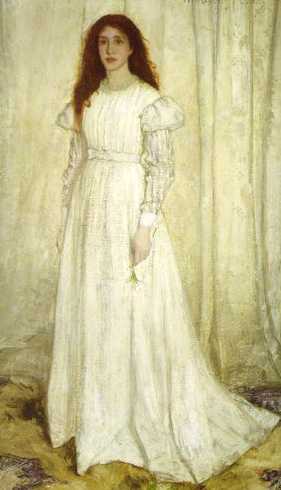|
GIRLS or WOMEN
|
|||
|
HOME | BIOLOGY | FILMS | GEOGRAPHY | HISTORY | INDEX | MUSIC | SOLAR BOATS | SPORT | SPONSORS |
|||
|
A woman is a female human, in contrast to an adult male, who is a man.
The term woman (irregular plural: women) is usually used for an adult, with the term girl being the usual term for a female child or adolescent. However, the term is also sometimes used for a female human regardless of age, as in phrases like "women's rights".
Symbol of the planet Venus
Etymology
The English term "man" (from Proto-Germanic mannaz "man, person") and words derived therefrom can designate any or even all of the human race regardless of their gender or age. This is indeed the oldest usage of "man". In Old English the words wer and wyf (also wæpman and wifman) were what was used to refer to "a man" and "a woman" respectively, and "man" was gender neutral. In Middle English man displaced wer as term for "male human", whilst wyfman (which eventually evolved into woman) was retained for "female human". "Man" does continue to carry its original sense of "Human" however, resulting in an asymmetry sometimes criticized as sexist.
The symbol for the planet Venus is the sign also known in biology for the female sex: a stylized representation of the goddess Venus's hand mirror: a circle with a small cross underneath (Unicode: ♀). The Venus symbol also represented femininity, and in ancient alchemy stood for copper. Alchemists constructed the symbol from a circle (representing spirit) above a cross (representing matter).
Terminology
The English language's original word for "woman" was Old English wīf, akin to German Weib; it later became the modern word "wife." The modern word "woman" etymologically derives from wīfmann, with the addition of mann, "person", from Germanic mannaz. This formation is peculiar to English. The equivalents for "man" in Old English were wer (a cognate of Latin vir, "man") and wǣpnedmann, literally "weaponed person". As previously mentioned, the term man continues to carry its original sense of "Human", though this usage results in an asymmetry which is sometimes criticized as sexist.
The word girl originally meant "young person of either sex"; it was only around the beginning of the 16th century that it came to mean specifically a female child. Nowadays girl is also often used colloquially to refer to a young or unmarried woman. Since the early 1970s, feminists have challenged such usage, and today, using the word in the workplace (as in office girl) is typically considered inappropriate in the United States and United Kingdom because it implies a view of women as infantile. The use remains commonplace in several other English-speaking countries.
Girls Aloud
Conversely, in certain non-Western cultures which link family honor with female virginity, the word girl is still used to refer to a never-married woman; in this sense it is used in a fashion roughly analogous to the obsolete English maid or maiden. Referring to an unmarried female as woman can, in such a culture, imply that she is sexually experienced, which would be an insult to her family.
In more informal settings, the use of girl to refer to an adult female is also common practice in certain usage (such as girls' night out), even among elderly women. In this sense, girl may be considered to be the analogue to the British word bloke for a man. Some regard non-parallel usages, such as men and girls, as sexist. A number of other derogatory terms for women are also in common usage.
There are various words used to refer to the quality of being a woman. The term "womanhood" merely means the state of being a woman; "femininity" is used to refer to a set of supposedly typical female qualities associated with a certain attitude to gender roles; "womanliness" is like "femininity", but is usually associated with a different view of gender roles; "femaleness" is a general term, but is often used as shorthand for "human femaleness"; "distaff" is an archaic adjective derived from women's conventional role as a spinner, now used only as a deliberate archaism; "muliebrity" is a "neologism" (derived from the Latin) meant to provide a female counterpart of "virility", but used very loosely, sometimes to mean merely "womanhood", sometimes "femininity", and sometimes even as a collective term for women.
WOMEN'S RIGHTS
Women’s rights usually refers to human rights which are or have been granted to adult men but not to adult women in a particular society. In most societies, with few exceptions, women have historically been subjugated by patriarchal infrastructures and denied many basic human rights. Although significant reforms have been made in some parts of the world to extend human rights to women and men equally, in many others women continue to be treated with the same legal standing as children or as chattel belonging to their fathers or husbands, or pressured to conform to strict gender roles which may go against their wishes. Although by number, women constitute a majority of the population worldwide, they wield disproportionately low political, sexual, and socioeconomic power. Advocates for women’s rights seek to correct these power imbalances by granting women the same rights and responsibilities as men.
Mean Girls the movie - Lindsay Lohan
Culture and gender roles
In many prehistoric cultures, women assumed a particular cultural role. In hunter-gatherer societies, women were generally the gatherers of plant foods, while men hunted meat. Because of their intimate knowledge of plant life, most anthropologists argue that it was women who led the Neolithic Revolution and became history's first pioneers of agriculture.
In more recent history, the gender roles of women have changed greatly. Traditional gender roles for middle-class women typically involved domestic tasks emphasizing child care, and did not involve entering employment for wages. For poorer women, especially among the working classes, this often remained an ideal, for economic necessity has long compelled them to seek employment outside the home, although the occupations traditionally open to working-class women were lower in prestige and pay than those open to men. Eventually, restricting women from wage labor came to be a mark of wealth and prestige in a family, while the presence of working women came to mark a household as being lower-class.
The women's movement is in part a struggle for the recognition of equality of opportunity with men, and for equal rights irrespective of sex, even if special relations and conditions are willingly incurred under the form of partnership involved in marriage. The difficulties of obtaining this recognition are due to historical factors combined with the habits and customs history has produced. Through a combination of economic changes and the efforts of the feminist movement in recent decades women in most societies now have access to careers beyond the traditional one of "homemaker". Despite these advances, modern women in Western society still face challenges in the workplace as well as with the topics of education, violence, health care, and motherhood to name a few.
These changes and struggles are among the foci of the academic field of women's studies.
Jessica Alba as Honey
BIOLOGY
Biological factors are not the sole determinants of whether persons can be considered, or consider themselves, women. Some women can have abnormal hormonal or chromosomal differences (such as congenital adrenal hyperplasia, complete or partial androgen insensitivity syndrome or other intersex conditions), and there are women who may be without, at least for an earlier part of their lives, typical female physiology (trans, transgendered or transsexual women). (See gender identity.)
In terms of biology, the female sex organs are involved in the reproductive system, whereas the secondary sex characteristics are involved in nurturing children or attracting a mate. Most women have the karyotype 46,XX, but around one in a thousand will be 47,XXX and one in 2500 will be 45,X.
Although fewer females than males are born (the ratio is around 1:1.05), due to a longer life expectancy there are only 81 men aged 60 or over for every 100 women, and among the oldest, there are only 53 men for every 100 women. Women have a lower death rate than men, and live on average five years longer. This is due to a combination of factors: genetics (redundant and varied genes present on sex chromosomes in women); sociology (such as not being expected in most countries to perform military service); health-impacting choices (such as suicide or the use of cigarettes and alcohol); the presence of the female hormone estrogen, which has a cardioprotective effect in premenopausal women; and the effect of high levels of androgens in men. Out of the total human population, there are 101.3 men for every 100 women (source: 2001 World Almanac).
After the onset of menarche, most women are able to become pregnant and bear children. The study of female reproduction and reproductive organs is called gynaecology. Women generally reach menopause in their late 40s or early 50s, at which point their ovaries cease producing estrogen and they can no longer become pregnant.
To a large extent, women suffer from the same illnesses as men. However, there are some diseases that primarily affect women, such as lupus. Also, there are some sex-related illnesses that are found more commonly or exclusively in women, e.g., breast cancer, cervical cancer or ovarian cancer. Women and men may have different symptoms of an illness and may also respond differently to medical treatment. This area of medical research is studied by gender-based medicine.
GIRLS
A girl is a young female human, as opposed to a boy, a young male human. The age at which a female person transitions from girl to woman varies in different societies; typically the transition from adolescence to maturity is taken to occur in the late teens.
The English word (first documented in 1290) originally designated a child of either sex. During the 14th century its sense was narrowed to specifically female children. Subsequently, it was extended to refer also to mature but unmarried young women since the 1530s. Usage in the sense of (romantic) "sweetheart" arose in the 17th century.
Historically, girls faced discrimination and limitations on the roles they were expected to play in their societies, and the United Nations targeted discrimination in schooling to end by 2010. An ongoing debate about the influences of nature versus nurture in shaping the behavior of girls and boys raises questions about whether the roles played by girls are the result of inborn differences or socialization. Images of girls in art, literature, and popular culture often demonstrate assumptions about gender roles.
The term 'Girls' is also used to describe 'Girl Singing Groups', when in fact they should more correctly be described as Women.
Happy or Sunshine Girls
Demographics
There are 2.18 billion people (est. UNICEF, 2004) aged 18 or under in the world, for a total of more than one billion living girls. From birth, girls are a slight minority due to both natural factors (the human sex ratio has been observed since the 1700s as approximately 1,050 boys for every 1,000 girls) and due to sex selection on the part of parents.
Although the International Covenant on Economic, Social and Cultural Rights specifies that "primary education shall be compulsory and available free to all", girls are slightly less likely to be enrolled as students in primary (70% enrollment vs. 74% for boys) or secondary education (59% vs. 65%). This disparity is targeted to end under the Millennium Development Goals and has closed substantially since 1990.
GIRL GENDER ROLES
In all cultures, girls have been socialized into gender roles. Girls have traditionally been associated with playing with dolls and toy cooking and cleaning equipment, while boys have been associated with toys and games that require more physical activity or simulated violence, such as toy trucks, balls, and toy guns. Girls are less often encouraged to pursue sports, with the exception of sports that might be considered "feminine," such as figure skating or gymnastics; or those considered "gender-neutral," such as tennis. They may be prevented from participating in many of the same activities that boys participate in at the same age, as a matter of protecting them from perceived outside dangers, such as boys and men, or anything that may cause physical injury. Sometimes boys are presumed to be more responsible than girls, except in the cases of caring for younger children, which is sometimes thought to be instinctual in girls. Girls, as a group, may be perceived as being more docile than boys, and as being less capable of rational decision making and more governed by emotional responses.
The reasons for this perceived difference in the behavior of girls and boys are a controversial topic in both public debate and the sciences. The idea that differences in gender roles originate in differences in biology originates from 19th-century anthropology; more recently, sociobiology and evolutionary psychology have turned to this problem to explain those differences by treating them as evolutionary adaptations to a lifestyle of Paleolithic hunter-gatherer societies. For example, the need to take care of offspring may have limited the females' freedom to hunt and to assume positions of power. Simon Baron-Cohen, a Cambridge University professor of psychology and psychiatry, argues that "the female brain is predominantly hard-wired for empathy, while the male brain is predominantly hard-wired for understanding and building systems."
On the other hand, feminists have argued that gender roles are the result of stereotypes and socialization rather than any innate biological differences. Owing to the influence of (among others) Simone de Beauvoir's feminist works and Michel Foucault's reflections on sexuality, the idea that gender was unrelated to sex gained ground during the 1980s, especially in sociology and cultural anthropology - an idea that has taken hold in transgender groups.
The biological viewpoint of gender roles is not that all gender distinctions result from biology, but rather that biology has an influence. Some feminists deny this, but many feminists agree that both biology and upbringing have an influence on gender roles, with the question being the relative importance of each. This conflict is often called nature versus nurture.
Several studies, such as the Programme for International Student Assessment of the OECD, have shown that, in developed countries, girls usually obtain better scores than boys do in secondary schools in Literature and Language, boys on the other hand tend to score higher in mathematics. However, their choices afterwards in postsecondary school are often very different and lead them to less socially recognized professions. Relatively few girls become engineers, though in the USA, more do become doctors.
ETYMOLOGY
The word "girl" first appears during the Middle Ages. The Anglo-Saxon word gyrela = "ornament" may have given rise to the modern pronunciation of "girl", if the change in meaning can be explained. While there is no general agreement about the etymology of "girl", it is found in manuscripts dating from 1290 with the meaning "a child" (of either sex). A male child was called a "Knave girl"; a female child was called a "gay girl". Like many other words that originally were not gender-specific, "girl" gradually came to be used primarily and then exclusively for one sex. There are manuscripts dating from 1530 in which the word "girl" is used to mean "maiden" (also originally applied to both sexes), or any unmarried human female. Within little more than a century, however, the word began to take on implications of social class. In 1668, in his Diary, Samuel Pepys uses the word to mean a female servant of any age: "girl" = "serving girl". Note the parallel shift in the meaning of the word "maid".
USAGE
By the 18th century, there was a difference in some uses of the word between England and the Americas. In England, a "girl" was often a serving girl, while in America a "girl" was often a sweetheart or "girlfriend", for example, in the lyrics of the popular song "The Girl I Left Behind Me". In England, the word "girl" was also used as a euphemism for "prostitute", as for example by Richard Steele in The Spectator.
In America today, the word "girl" is often used as an intended compliment or used humorously. A woman of a certain age might be called a girl to suggest that she looks younger than she is, or a group of women might speak of themselves as "us girls", though all are well over the age of maidenhood. Adult women will sometimes refer to themselves as "girls", as in "We're having a girls' night out" or "It's a girl thing". But social shifts generally permit only the female gender group themselves to use such terminology without giving offence.
With the rise of feminism, the use of "girl" applied to any adult female became offensive to many, especially given the fact that the word was so often used to indicate low social status, low morals, weakness, or homosexuality. There is a parallel objection to use of the word "boy" to describe a male over the age of puberty. In modern usage, "girl" is properly restricted to mean a human female who has not reached adulthood, and some would restrict the usage to prepubescent girls. The term "young woman" is sometimes used in the period between childhood and full adulthood.
Using the word "girl" to refer to a male is usually meant to be insulting, such as "You throw like a girl". The more insulting "girly-boy", which originated in 1589 as "girle-boy", is used to indicate a weak or "sissy" male. Calling a male a girl often serves as a provocation to fight (see fighting words). While outsiders might use "girl" or "girly" as a pejorative to refer to a gay male, within the gay community it is used as a term of endearment.
The word girl has many synonyms, including "belle", "chick", "doll", "gal", "lass" or "lassie", "maiden", and "miss". The slang word "gal", as in "Buffalo gals won't you come out tonight", is a variant pronunciation of girl.
The White Girl, Whistler (1862)
ART
Portrayals of girls may reflect their standing in the artists' culture, and a brief overview of different views of girls in different art periods gives a sense of girls' roles in societies around the world and at different points in time.
Egyptian murals included sympathetic portraits of young girls of royal descent.
Ancient Greek classical art and literature paid scant attention to female children, though there are many poems about boys. Only Sappho's poetry includes love poems addressed to girls.
In European art, some early paintings to feature girls are Juan de Flandes' Portrait of a Young Girl, circa 1500–1510 (shown at left); Frans Hals' Die Amme mit dem Kind in 1620; Diego Velázquez' Las Meninas in 1656; Jan Steen's The Feast of St. Nicolas, circa 1660; and Johannes Vermeer's Girl with a Pearl Earring and Girl Reading a Letter at an Open Window. Later paintings of girls include Albert Anker's portrait of a Girl with a Domino Tower and Camille Pissarro's 1883 Portrait of a Felix Daughter.
In American art, paintings that feature girls include Mary Cassatt's 1884 Children on the Beach and Whistler's Harmony in Gray and Green: Miss Cicely Alexander and The White Girl (shown at right).
As in art, portrayals of girls in literature can reflect the social norms of the time at which they were written. Many novels begin with the childhood of their heroine. Examples include Jane Eyre, who suffers ill treatment; and Natasha in War and Peace, who is sentimentalized. Other novels include Harper Lee's To Kill a Mockingbird, which has a young girl as protagonist; and Vladimir Nabokov's Lolita, about a girl subjected to sexual abuse. Memoirs of a Geisha was written by Caucasian American Arthur Golden. However, it has been deemed an accurate representation of geisha life in the early 20th century Japan. The book starts as the female main character and her sister are dropped into the pleasure district after being separated from their family.
Most early children's stories focused on boys, with the notable exception of Alice's Adventures in Wonderland, by Lewis Carroll, whose photographs of little girls are part of the history of photographic art. Popular culture
European fairy tales include some memorable stories about girls, including Goldilocks and the Three Bears; Rapunzel; Hans Christian Andersen's The Little Match Girl, The Little Mermaid, and The Princess and the Pea; the Brothers Grimm's Little Red Riding Hood; and others.
Children's books about girls include Little House on the Prairie, Eloise, Pippi Longstocking, Dragonsong, and A Wrinkle in Time. Books which have both boy and girl protagonists tend to focus on the boys, but important girl characters appear in Knight's Castle, The Lion, the Witch and the Wardrobe, The Book of Three, and the Harry Potter series.
By contrast, the Oz series had mainly female protagonists. The few male human characters in the books tended to be significantly more cowardly and less intelligent than their female counterparts, and usually fell in submissive or villainous roles. This is probably due to the author, L. Frank Baum, being the son in law of Matilda Joslyn Gage who founded the Women's National Liberal Union.
There have been many American comic books and comic strips featuring a girl as the main character, such as Little Lulu, Little Orphan Annie, Girl Genius, and Amelia Rules. In superhero comic books, an early girl character was Etta Candy, one of Wonder Woman's sidekicks. In the Peanuts series (by Charles Schulz), girl characters include Peppermint Patty, Lucy van Pelt, and Sally Brown.
The most famous Flemish comic strip is Spike and Suzy (Suske and Wiske), about the adventures of a boy and a girl (each about 10 years old); it was translated from Flemish into French and English. Franco-Belgian comics with girls in a central role include Isabelle (by Will) and Sophie (by Jidéhem).
In Japanese animated cartoons and comic books, girls are often protagonists. Most of the animated films of Hayao Miyazaki feature a young girl as the hero, as in Majo no takkyūbin (Kiki's Delivery Service). There are many other stories with girls as protagonists in the Shōjo style of manga, which is targeted to girls as an audience. Examples include The Wallflower, Ceres, Celestial Legend, and Full Moon o Sagashite. Other genres of Japanese cartoons often feature sexualized and objectified portrayals of girls.
Sexualization of young girls in art and entertainment is a common theme across all eras and mediums. However it is especially prominent, or at least more explicitly visible, in modern cinema and television. Some famous examples of this include Taxi Driver, The Blue Lagoon and Pretty Baby - films dealing with young girls in adult situations, typically under extraordinary circumstances. An older, and perhaps most notorious example is a book by Vladimir Nabokov, Lolita (1955) , that centers around a complex romantic relationship between a scholar and a young girl as they travel across the United States. Such very controversial work that has none-the-less gained acceptance as a classic. The fact that initial controversy over risque works that mix the themes of youth and sex tends to die down fairly quickly is a good indication that it is group reactionary behavior not grounded in any generally accepted ethical principles.
One of the most famous photographs of the Vietnam War shows a girl, Phan Thị Kim Phúc, whose clothes were burned off by napalm; she was taken to the hospital by the photographer and received medical care. She survived, married, and lives in Canada.
LINKS and REFERENCES
New energy drinks for adventure capitalists
Solar Red | Solar Crush | Solar Cola | Solar Citrus | Solar Spice
|
|||
|
This
website
is Copyright © 1999 & 2007 NJK. The bird The name '1824' is a trade mark of Solar Cola Ltd. All rights reserved. Max Energy Limited is an educational charity. |
|||
|
AUTOMOTIVE | BLUEBIRD | ELECTRIC CARS | ELECTRIC CYCLES | SOLAR CARS |






